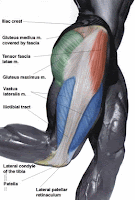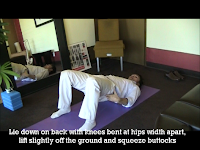So you’re a runner and you’ve got knee pain. Is it on the outer side of the knee? Does it hurt worse on going downhill? Do you hear clicking? You may have iliotibial band frictions syndrome (ITBFS).
ITBS is a painful knee condition that is common in runners, specifically those that run downhill. The iliotibial band (ITB) is the longest tendon in the body. It runs from the pelvis (gluteus maximus and tensor fascia lata specifically) to the tibia (a shin bone). It can get tight, particularly in people that have foot dysfunction (overpronation, for example), and when it does it can snap across the knee joint becoming inflamed.
It is the inflammation of the ITB that is most painful, although a tight tendon can definitely cause discomfort. So if this is you, please start by icing the ITB at the tibial insertion, or on the outer part of the knee. Next, you should probably see a sports chiropractor, who will go in and really release the area with myofascial work, adjust you pelvis, sacrum or lumbar spine (especially if you have associated low back pain–a common occurrence with ITBFS).
Then you’ll want to stretch. Watch the video below for the best running stretches and IT band home treatment for knee clicking and pain. Do this stretch everyday and watch your ITBS clear right up. You may need orthotics, particularly if this is a chronic and recurring problem, another reason to see your Los Angeles sports chiropractor. Happy stretching.















